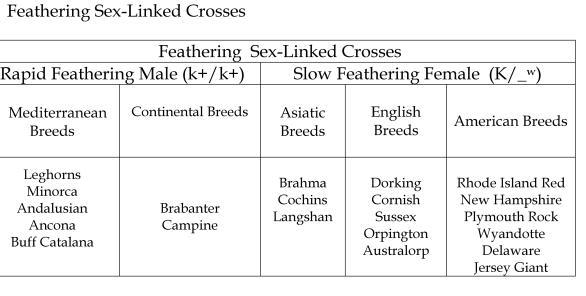Red sex-links don't have white in their plumage! Gold or brown sex-links do, because they are half dominant white from the dam side . Red sexlinks look almost like the sires Pro-reds, NHs, RIRs whatever red(gold gene) cock is used for the cross. The pullets feather out to look just like the sire, sometimes a little lighter red in color because of the recessive white (silver gene) dam used. Red sexlinks can be from many different breeds of chickens crossed. The most popular cross is Big red roo from a prodution type layer breed crossed onto Delaware or Silver-laced Wyandottes the female offspring will be (red with black tails no white anywhere) the white comes from using a dominant white hen as White Leghorn and most likely White Rocks or so-called (by the hatcheries) R .I. Whites (which they are not) because they are not Rose combed but that's an altogether different topic LOL This cross yields a buff/golden or brown color in the pyle area(head, neck, and wing bows) and white posterior end (tails, rump and some in the wing flight feathers too)
To sum it all up a Cherry Eggers=(production red, RIR, red sex-links) could be altogether different at one hatchery than the next. It all depends on what they choose to call their own version of the mix they use to make them.



